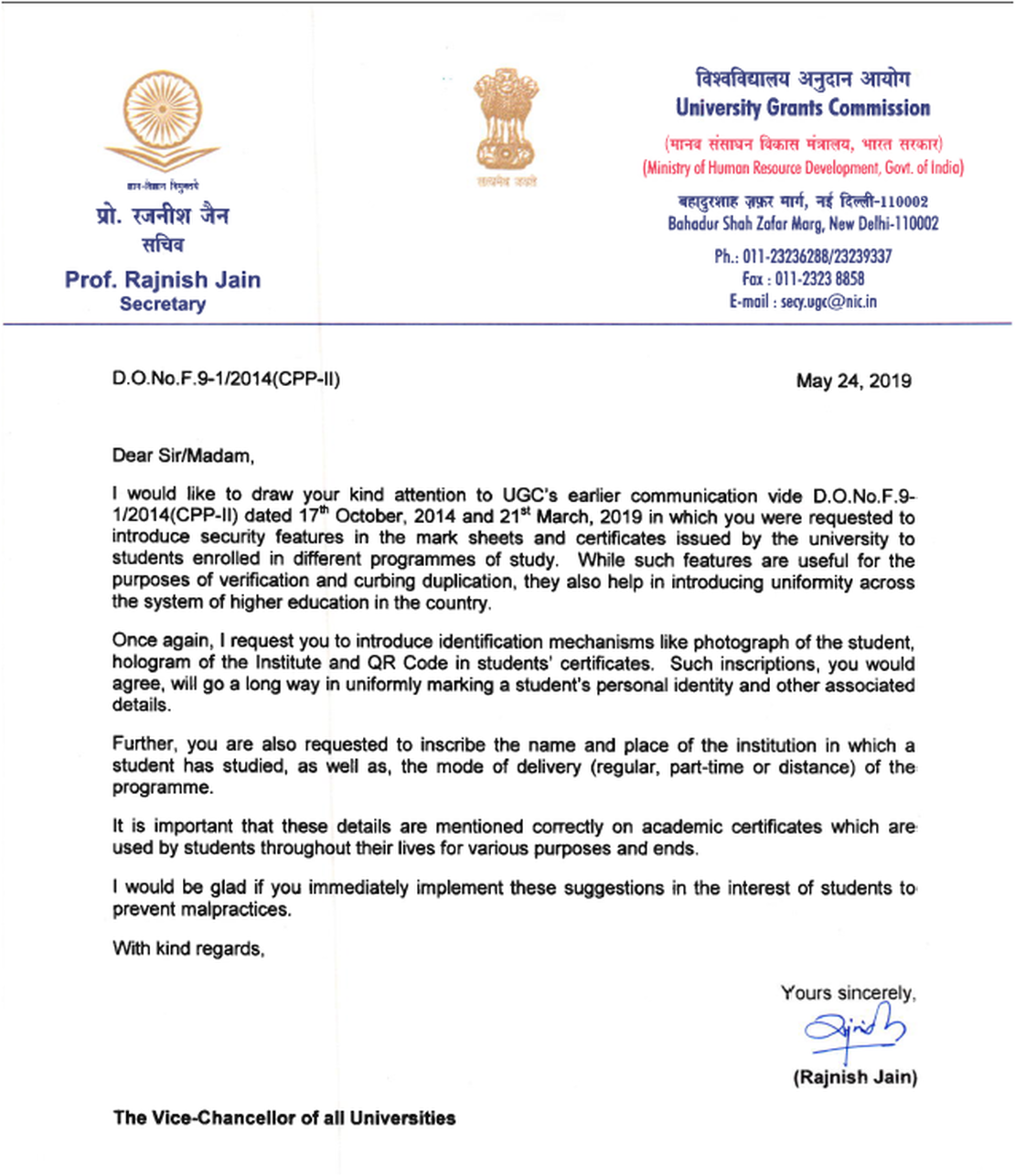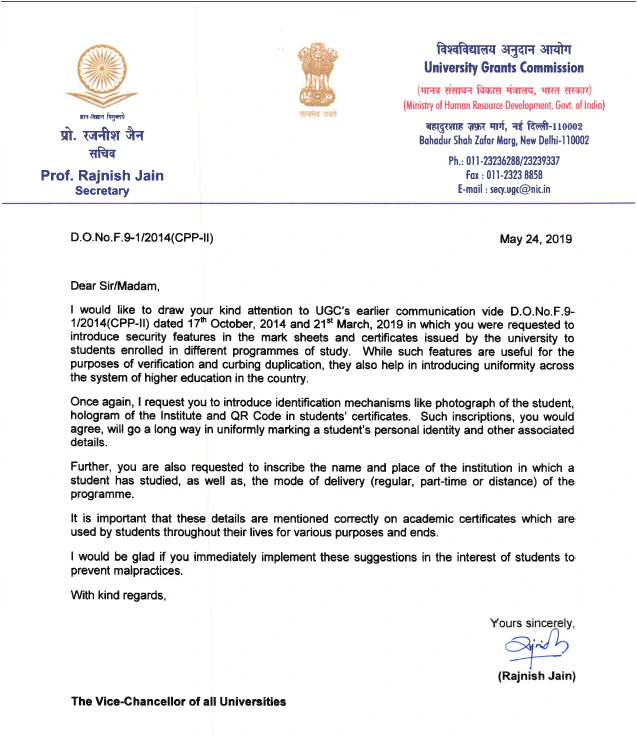5 steps that you can take to ensure tamperproof marksheets !
- Nikhil Jhingan
- Jul 23, 2019
- 5 min read

Why UGC mandated QR Coded degree certificates
Why UGC mandated QR Coded degree certificates and what you should do next, to comply
The security features will curb the falsification of academic documents of students
When University Grants Commission (UGC) mandates that all universities and higher education colleges in India have to incorporate security and issue QR code-based degree certificates , it is only a formalization of something that has been long pending. After relatively unsuccessful attempts at issuing guidance in 2017 (followed by another one earlier this year) and the subsequent non-compliance, UGC has now decided to wield the stick. It has mandated that the situation is grave and all universities need to incorporate a QR code into degree certificates.
This is an extremely welcome step. It is also important that one understands the rationale behind this mandate and breaks it down into simple steps/guidelines so that the universities get the “why” and “how” to implement this quickly and properly
In my earlier article on January 15, 2019, on Times of India, titled Stop fake degree scams with document security QR code , I had first suggested this solution in detail.

Top 10 points: Why UGC mandated QR code based degree certificates makes perfect sense
The number of unrecognized institutes and degrees in the last few years has increased. This move will help in curbing malpractices such as degree duplication or mark sheet forgery
Easy verification by relevant third parties
Providing institutes and individuals one-stop access to a student’s academic documents through QR codes
Helps to maintain privacy especially of the document holder and the verifier
QR codes are ubiquitous today and can be scanned using any smartphone
It will help all kinds of universities and not just those that are tech savvy & have big IT departments or budgets
With QR Code it is easy to inscribe all possible details including the name and place of the institutions, the type of program, the mode of program delivery such as regular, part-time or distance and other relevant information to help establish authenticity
This helps in the overall objective of digitization of all the higher education certificates and degrees
The flexibility provided by this approach not only ensures security but also helps to bring some uniformity across the higher education system, without compromising or bypassing the National Academic Depository (NAD), which is a 24X7 online storehouse of all academic certificates, diplomas, degrees, mark sheets that are digitized and lodged by academic institutions or boards.
Help students who apply for higher education abroad as the foreign universities and other authorities have to currently get the documents verified by the respective Indian institutions and Ministry of External Affairs (MEA) which is a time consuming and involved process
Even though one can appreciate the above reasons for having such a system, one issue in this mandate could be the absence of specific guidelines and standardisation. However, this should be considered in a positive light. It gives flexibility to each university without sacrificing the broad objectives. But for this to happen, I would recommend some key components of the solution that should be considered by all universities and higher education institutes.
5 things the right Secure QR Code solution should have
The right QR Code solution should be based on an advanced high strength digital signature technology (PKI) that makes the qr code tamper-proof. University credentials are used over decades and so it is important to get the qr code security right.
It should work seamlessly for both printed and electronic versions of the certificates and transcripts. This is important because students need to send their credentials over electronic means and it is neither practical or desirable to link any verification feature to the document’s physical attributes.
It should be easy to validate on an ad-hoc basis by anyone with a simple smartphone app, anywhere – ideally even offline (without network connectivity).
There should be absolutely no access to the University’s central database for validation thus making it efficient and keeping the IT systems secure and hack-proof. In addition, it should not have any URL inside the QR code which makes it vulnerable for phishing attacks.
This should be affordable so that this does not lead to additional fees paid by students. Ideally, it should be only a small fee per document for all the certificates that the university generates. It should also be easy to set up - and fit seamlessly with any the current document generation system.
Finally, the solution provider should have had a good track record and experience of preferably 5 years or more in specifically providing document security solutions using the QR code across educational and other verticals. It would be an advantage if the solution provider has demonstrated the capability to execute QR code-based projects internationally and that too with demanding customers across a range of use cases.
Keeping the above 5 simple guidelines, the UGC mandate can be implemented by all higher education institutions, while maintaining autonomy and yet standardize the solution for effectiveness and easy acceptance. This will help to enhance and maintain the reputation and integrity of Indian educational institutions all over the world.
This article first appeared in Times of India on July 17, 2019 under the headline - Why UGC mandated QR coded degree certificates and what you should do next, to comply
You may also like
Did we tell you about preventing forged University Transcripts
10 amazing uses of QR codes in industry that you may never have guessed
Fake Degrees being sold all over the world - Cause of increased imcompetence ?

